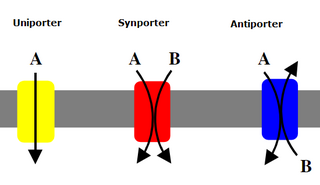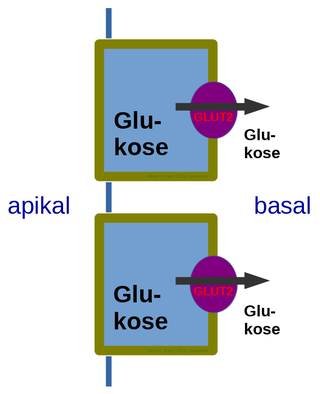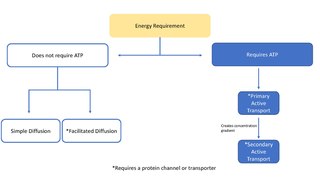| Name | Uniprot ID | Function | Disease |
|---|
| SLC37A4 | O43826 | Transports glucose-6-phosphate from the cytoplasm to the lumen of the endoplasmic reticulum. Forms with glucose-6-phosphatase the complex responsible for glucose production through glycogenolysis and gluconeogenesis. Hence, it plays a central role in homeostatic regulation of blood glucose levels. | Glycogen storage disease type I [37] |
| FLVCR1 | Q9Y5Y0 | Heme transporter that exports cytoplasmic heme. It can also export coproporphyrin and protoporphyrin IX, which are both intermediate products in the heme biosynthetic pathway. Does not export bilirubin. Heme export depends on the presence of HPX and may be required to protect developing erythroid cells from heme toxicity. Heme export also provides protection from heme or ferrous iron toxicities in liver and brain. Causes susceptibility to FeLV-C in vitro. Required during erythtopoiesis to maintain intracellular free heme balance since in proerythroblasts, heme synthesis intensifies and its accumulation is toxic for cells. | Retinitis pigmentosa [38] |
| SLC33A1 | O00400 | Probable acetyl-CoA transporter necessary for O-acetylation of gangliosides. | Spastic paraplegia [39] |
| SLC17A5 | Q9NRA2 | Transports glucuronic acid and free sialic acid out of the lysosome after it is cleaved from sialoglycoconjugates undergoing degradation, this is required for normal CNS myelination. Mediates aspartate and glutamate membrane potential-dependent uptake into synaptic vesicles and synaptic-like microvesicles. Also functions as an electrogenic 2NO(3)(-)/H(+) cotransporter in the plasma membrane of salivary gland acinar cells, mediating the physiological nitrate efflux, 25% of the circulating nitrate ions is typically removed and secreted in saliva. | Salla disease [40] |
| SLC2A10 | O95528 | Facilitative glucose transporter. | Arterial tortuosity syndrome [41] |
| SLC22A12 | Q96S37 | Required for efficient urate re-absorption in the kidney. Regulates blood urate levels. Mediates saturable urate uptake by facilitating the exchange of urate against organic anions. | Hypouricemia [42] |
| SLC16A1 | P53985 | Proton-coupled monocarboxylate transporter. Catalyzes the rapid transport across the plasma membrane of many monocarboxylates such as lactate, pyruvate, branched-chain oxo acids derived from leucine, valine and isoleucine, and the ketone bodies acetoacetate, beta-hydroxybutyrate and acetate. Depending on the tissue and on circumstances, mediates the import or export of lactic acid and ketone bodies. Required for normal nutrient assimilation, increase of white adipose tissue and body weight gain when on a high-fat diet. Plays a role in cellular responses to a high-fat diet by modulating the cellular levels of lactate and pyruvate, small molecules that contribute to the regulation of central metabolic pathways and insulin secretion, with concomitant effects on plasma insulin levels and blood glucose homeostasis. | Hypoglycemia [43] |
| SLC22A5 | O76082 | Sodium-ion dependent, high affinity carnitine transporter. Involved in the active cellular uptake of carnitine. Transports one sodium ion with one molecule of carnitine. Also transports organic cations such as tetraethylammonium (TEA) without the involvement of sodium. | Systemic primary carnitine deficiency [44] |
| CLN3 | Q13286 | Involved in microtubule-dependent, anterograde transport of late endosomes and lysosomes. | Ceroid lipofuscinosis [45] |
| SLC16A13 | Q7RTY0 | Proton-linked monocarboxylate transporter. Catalyzes the rapid transport across the plasma membrane of many monocarboxylates (By similarity). | Diabetes mellitus [46] |
| SLC2A9 | Q9NRM0 | Transport urate and fructose. May have a role in the urate reabsorption by proximal tubules. Also transports glucose at low rate. | Hypouricemia [47] |
| SLC19A3 | Q9BZV2 | Mediates high affinity thiamine uptake, probably via a proton anti-port mechanism. | Thiamine metabolism dysfunction syndrome [48] |
| FLVCR2 | Q9UPI3 | Acts as an importer of heme. Also acts as a transporter for a calcium-chelator complex, important for growth and calcium metabolism. | Fowler syndrome [35] |
| SLC16A12 | Q6ZSM3 | Proton-linked monocarboxylate transporter. Catalyzes the rapid transport across the plasma membrane of many monocarboxylates (By similarity). | Cataract [49] |
| SLC19A2 | O60779 | High-affinity transporter for the intake of thiamine. | Megaloblastic Anemia [50] |
| MFSD8 | Q8NHS3 | May be a carrier that transport small solutes by using chemiosmotic ion gradients (Potential). | Ceroid lipofuscinosis [51] |
| SLC40A1 | Q9NP59 | May be involved in iron export from duodenal epithelial cell and also in transfer of iron between maternal and fetal circulation. Mediates iron efflux in the presence of a ferroxidase (hephaestin and/or ceruloplasmin). | Hemochromatosis [52] |
| SLC2A4 | P14672 | Insulin-regulated facilitative glucose transporter. | Diabetes mellitus [53] |
| SLC45A2 | Q9UMX9 | Melanocyte differentiation antigen. May transport substances required for melanin biosynthesis (By similarity). | Albinism [54] |
| SLCO2A1 | Q92959 | May mediate the release of newly synthesized prostaglandins from cells, the transepithelial transport of prostaglandins, and the clearance of prostaglandins from the circulation. Transports PGD2, as well as PGE1, PGE2 and PGF2A. | Hypertrophic osteoarthropathy [55] |
| SLC22A4 | Q9H015 | Sodium-ion dependent, low affinity carnitine transporter. Probably transports one sodium ion with one molecule of carnitine. Also transports organic cations such as tetraethylammonium (TEA) without the involvement of sodium. Relative uptake activity ratio of carnitine to TEA is 1.78. A key substrate of this transporter seems to be ergothioneine (ET). | Rheumatoid arthritis [56] |
| SLC16A11 | Q8NCK7 | Proton-linked monocarboxylate transporter. Catalyzes the rapid transport across the plasma membrane of many monocarboxylates (By similarity). Probably involved in hepatic lipid metabolism: overexpression results in an increase of triacylglycerol(TAG) levels, small increases in intracellular diacylglycerols and decreases in lysophosphatidylcholine, cholesterol ester and sphingomyelin lipids. | Diabetes mellitus [46] |
| SLCO1B3 | Q9NPD5 | Mediates the Na(+)-independent uptake of organic anions such as 17-beta-glucuronosyl estradiol, taurocholate, triiodothyronine (T3), leukotriene C4, dehydroepiandrosterone sulfate (DHEAS), methotrexate and sulfobromophthalein (BSP). Involved in the clearance of bile acids and organic anions from the liver. | Hyperbilirubinemia [57] |
| SLCO1B1 | Q9Y6L6 | Mediates the Na(+)-independent uptake of organic anions such as pravastatin, taurocholate, methotrexate, dehydroepiandrosterone sulfate, 17-beta-glucuronosyl estradiol, estrone sulfate, prostaglandin E2, thromboxane B2, leukotriene C3, leukotriene E4, thyroxine and triiodothyronine. Involved in the clearance of bile acids and organic anions from the liver. | Hyperbilirubinemia [57] |
| SLC2A2 | P11168 | Facilitative glucose transporter. This isoform likely mediates the bidirectional transfer of glucose across the plasma membrane of hepatocytes and is responsible for uptake of glucose by the beta cells; may comprise part of the glucose-sensing mechanism of the beta cell. May also participate with the Na(+)/glucose cotransporter in the transcellular transport of glucose in the small intestine and kidney. | Fanconi-Bickel syndrome [58] |
| SLC2A1 | P11166 | Facilitative glucose transporter. This isoform may be responsible for constitutive or basal glucose uptake. Has a very broad substrate specificity; can transport a wide range of aldoses including both pentoses and hexoses. | GLUT1 deficiency syndrome 1 [59] |
| SLC46A1 | Q96NT5 | Has been shown to act both as an intestinal proton-coupled high-affinity folate transporter and as an intestinal heme transporter which mediates heme uptake from the gut lumen into duodenal epithelial cells. The iron is then released from heme and may be transported into the bloodstream. Dietary heme iron is an important nutritional source of iron. Shows a higher affinity for folate than heme. | Hereditary folate malabsorption [60] |
| SLC17A8 | Q8NDX2 | Mediates the uptake of glutamate into synaptic vesicles at presynaptic nerve terminals of excitatory neural cells. May also mediate the transport of inorganic phosphate. | Deafness [61] |
















